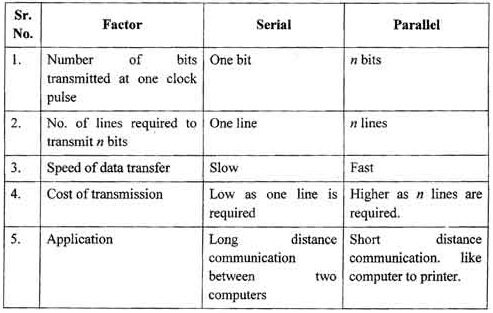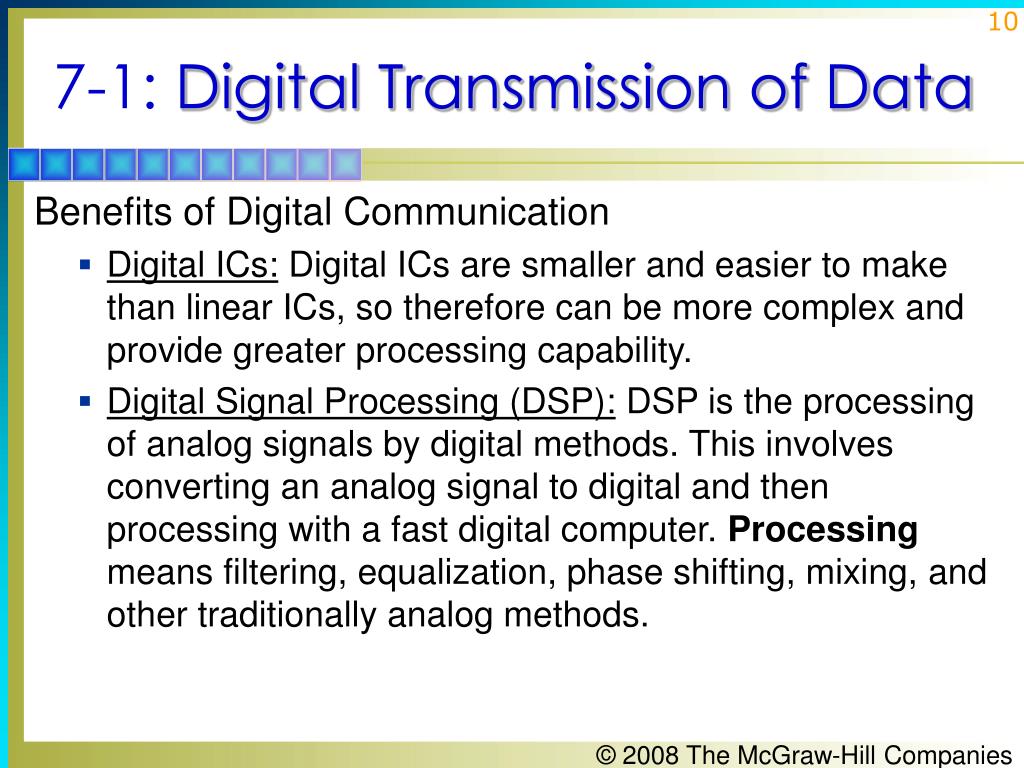
Moreover, the longer the cable, the bigger the probability to experience crosstalk: it is a phenomenon of electromagnetic induction where the signal transmitted by one cable creates an interference with a signal on another cable. For instance, by associating 8 buses (cables) and transmitting 1 bit per bus at the same time, one has the opportunity to go 8 times faster as by progressively sending the data: it is the biggest advantage of this method.
#Advantages of parallel data transmission serial
However, for great distances, serial transmission is preferred: using parallel transmission would require too much equipment. Parallel transmission This data transmission method consists in sending bits between an emitter and a receiver on several lines, simultaneously. Main use Parallel transmission can be used for data transfer on a short distance, for instance between components of a machine (PCI protocol).

Serial protocols will often send the least significant bits first, so the smallest bit is on the far left.

Slight differences in the transmission rate aren’t a problem because the receiver re- syncs at the start of each byte.(By the way, if you noticed that 1. Its drawback is its price: having several cables is much more expensive than having only one, whic makes sense! It is however possible to make parallel data transmission through only one physical line, by dividing the bandwidth into several underlying lanes. Both sides must also agree on the transmission speed (such as 9. Moreover, it can easily be implemented on a machine, since creating a parallel port to receive the additional buses is very easy. Parallel transmission As shown in the fig, eight separate wires are used to transmit 8 bit data from sender to receiver. The importance of start and stop bits īy using a start and stop bit, the receiver is able to discern when the next set of data is sent and ends, allowing for only one byte of data to be sent at a time.For instance, by associating 8 buses (cables) and transmitting 1 bit per bus at the same time, one has the opportunity to go 8 times faster as by progressively sending the data: it is the biggest advantage of this method.

Parallel data transmission is used to transmit voluminous amounts of data. This is specifically used in integrated circuits with RAM. Successful data transmission of a voluminous amount of data. Parallel data transmission is when bits are sent concurrently over a number of parallel wires. Serial data transmission is when bits are sent one bit at a time over a single wire when transmitting data. Advantage of parallel transmission It is speedy way of transmitting data as multiple bits are transmitted simultaneously with a single clock pulse. Data is sent much faster as parallel transmission can increase the transfer speed by a factor of n over the serial transmission. Parallel transmission is often used internally in a computer since it is quick and the distances involved are short, as well as in devices such as disk drives, joysticks and a majority of printers. A visual explanation of the difference between serial and parallel transmissions. Advantages of Using Parallel Data Transmission It is easier to program. Parallel transmission is a method of transmitting data where each bit in a byte is transmitted in an individual channel or wire, hence multiple bits can be sent at the same time.


 0 kommentar(er)
0 kommentar(er)
